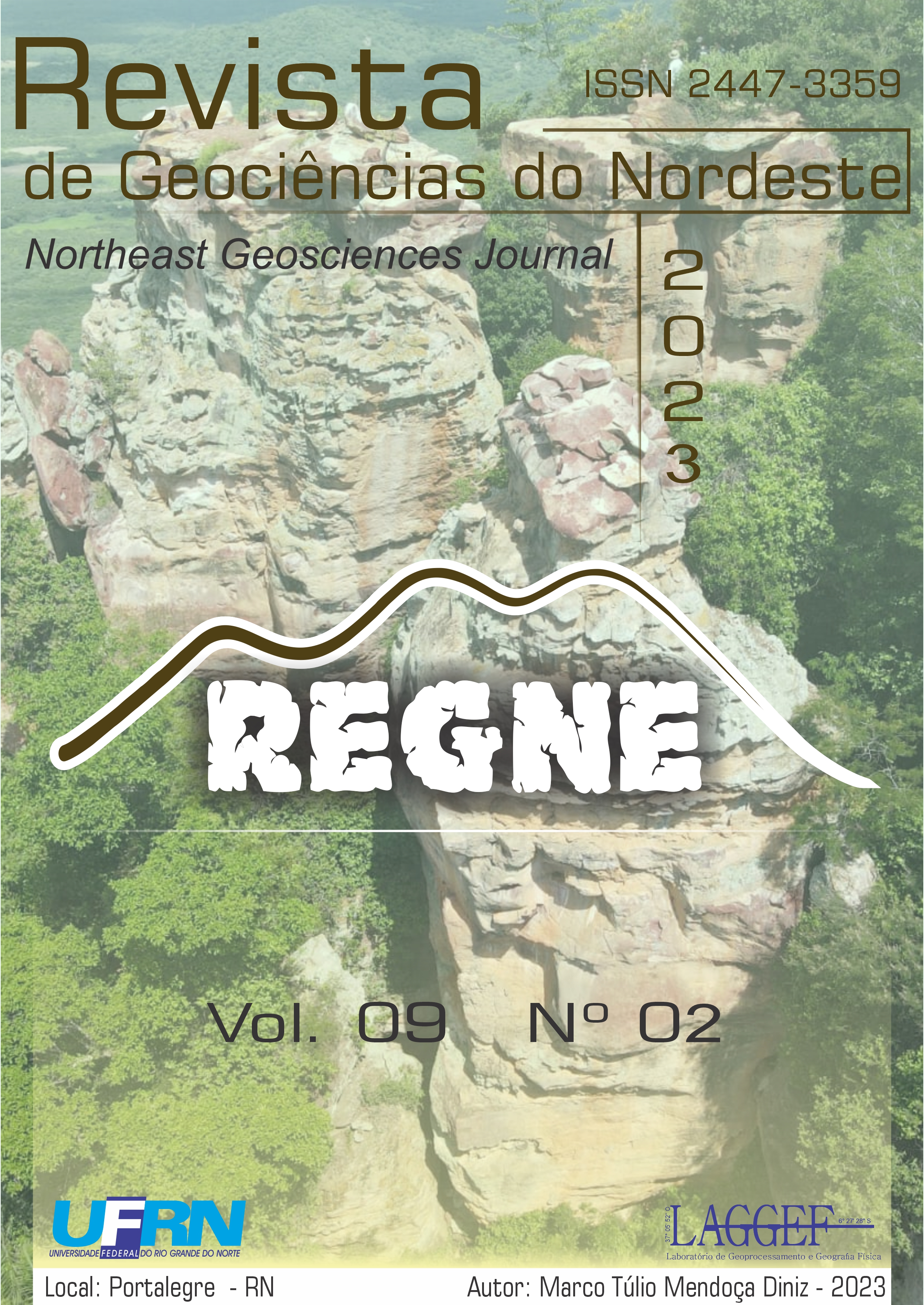.
Topographic quantitative analysis of the Salado river’s basin – Atacama Region – Chile
DOI:
https://doi.org/10.21680/2447-3359.2023v9n2ID32348Abstract
Quantitative analysis of topographic-digital data is a fundamental step in structural geomorphological (modern tectonic) and dynamic geomorphological (mass movement) investigations. Initially, there were a limited number of standard algorithms for analyzing topographic data, including the widely used "Stream Profiler". Meanwhile, the digitization of many of the topographic analysis methods democratized access to such algorithms through the development of freely available open-source code. Flexible tools, such as TopoToolBox (TTB) and the Topographic Analysis Kit (TAK). TTB contains few products in its command set, however, it has unique functions that allow complex analysis on a regional scale. Already TAK allows the evaluation of a large amount of data in a short period. The objective of this study is to identify anomalous break points distributed in the drainage network. It is also proposed to investigate the drivers responsible for maintaining the spatial distribution pattern, such as lithological controls and incision pulse propagation. The main result obtained in this study is that there are several continuous and discrete breaks in the longitudinal profiles. Another fact about the spatial distribution of the breaks is that most of them occur in the proximity between tributary confluences and the entrenched valley of the collecting rivers.
Downloads
Downloads
Published
How to Cite
Issue
Section
License
Copyright (c) 2023 Notheast Geoscience Journal

This work is licensed under a Creative Commons Attribution 4.0 International License.


 Português (Brasil)
Português (Brasil) English
English







